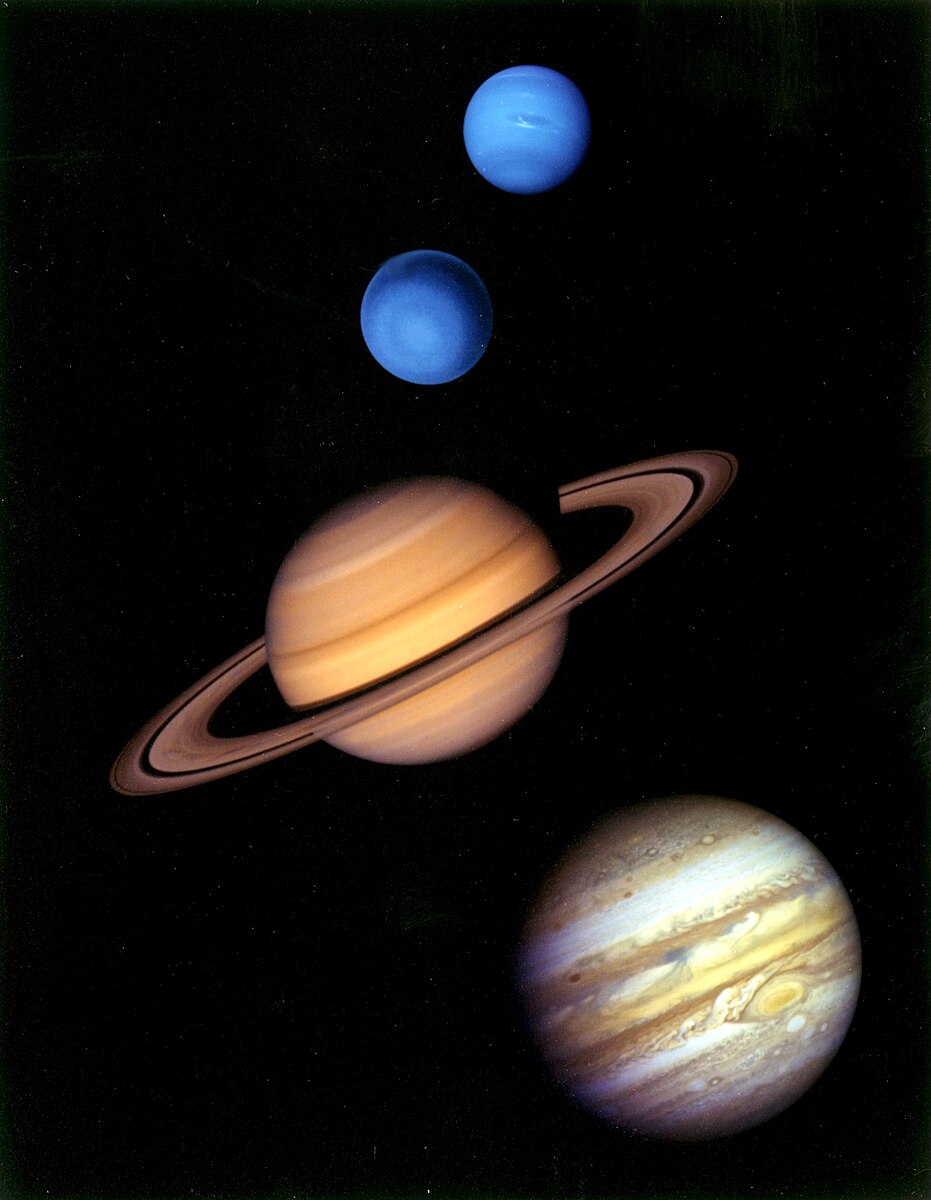 | ||
The outer planets are those planets in the Solar System beyond the asteroid belt, and hence refers to the gas giants, which are in order of their distance from the Sun:
Contents
The outer planets all have ring systems, although all but Saturn's are faint when viewed from Earth.
Another aspect common to the gas giants is their many natural satellites (moons), two of which are larger than the planet Mercury (Jupiter's Ganymede and Saturn's Titan). That pair and Io, Callisto, Europa, and Triton, are larger than Pluto and Eris.
This region of space is also occupied by centaurs, various fields of trojans, and many comets.
Pluto was considered to be an outer planet from its discovery in 1930 until its reclassification as a dwarf planet in 2006 (see also: Kuiper belt).
Exploration
In situ exploration by spacecraft includes Pioneer 10, Pioneer 11, Voyager 1, Voyager 2, Ulysses, Galileo, Cassini–Huygens, and New Horizons. Planned missions include Juno Jupiter Orbiter and possibly the Outer Planet Flagship Missions; there are various proposals too, such as Uranus orbiter and probe. Ongoing missions for the outer planets as of 2011 include Cassini probe, orbiting Saturn, New Horizons, headed for Pluto, and Juno, headed for Jupiter. Cassini and New Horizons also visited Jupiter with a flyby.
One of the breakthroughs that made exploration of the outer planets much easier, was the concept of the planetary gravity assist. Discovered in the 1960s, a spacecraft approaches a planet like Jupiter in such a way as to be accelerated to a higher speed. This allows a much smaller rocket to be used for a given launch.
Another promising technology, tested on Deep Space 1, is the ion engine. Ion engines can make much more efficient use of propellant than existing chemical rockets.
Mission concepts
List of mission concepts:
